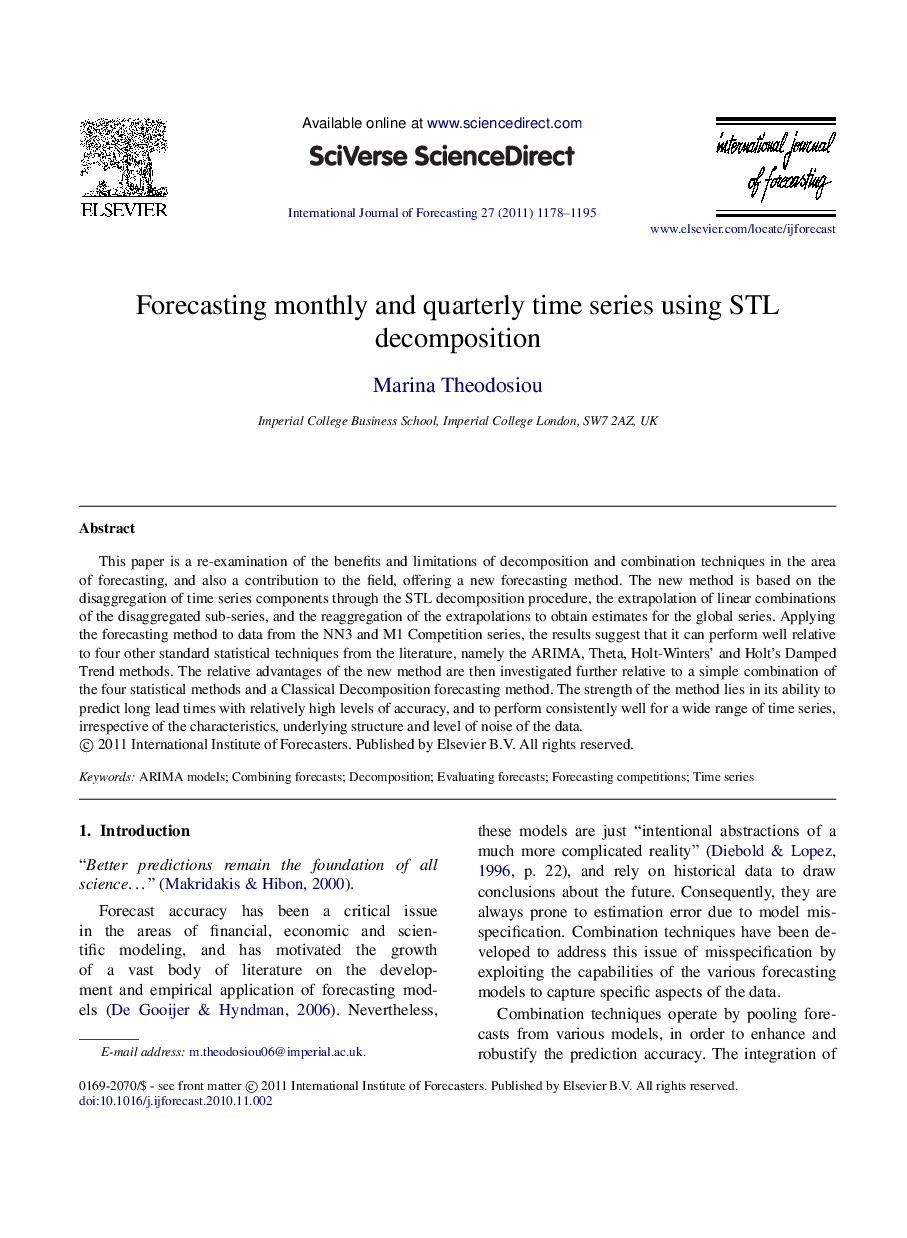| Article ID | Journal | Published Year | Pages | File Type |
|---|---|---|---|---|
| 998292 | International Journal of Forecasting | 2011 | 18 Pages |
This paper is a re-examination of the benefits and limitations of decomposition and combination techniques in the area of forecasting, and also a contribution to the field, offering a new forecasting method. The new method is based on the disaggregation of time series components through the STL decomposition procedure, the extrapolation of linear combinations of the disaggregated sub-series, and the reaggregation of the extrapolations to obtain estimates for the global series. Applying the forecasting method to data from the NN3 and M1 Competition series, the results suggest that it can perform well relative to four other standard statistical techniques from the literature, namely the ARIMA, Theta, Holt-Winters’ and Holt’s Damped Trend methods. The relative advantages of the new method are then investigated further relative to a simple combination of the four statistical methods and a Classical Decomposition forecasting method. The strength of the method lies in its ability to predict long lead times with relatively high levels of accuracy, and to perform consistently well for a wide range of time series, irrespective of the characteristics, underlying structure and level of noise of the data.
